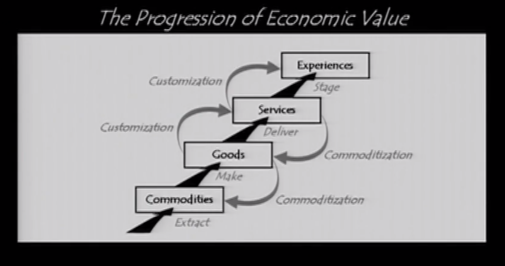User Experience (UX) is money – it’s as simple as that. Be in it, or you will lose out – one way or another.
In the current ‘Age of the Customer‘, UX can have an impact on virtually every part of your business – and if you don’t adapt, you risk getting left behind – and perhaps worse – not even satisfying your customers.
UX, done correctly, should impact all of the following money-related aspects of your business:
- Customer Experience (CX) (of your company, and it’s services/products)
- Customer satisfaction
- Business strategy
- Brand loyalty
- Identifying innovation and new business opportunities
- Product and service differentiation
- Product and service design
- Product development (as UX helps you identify the best options to be developed for your budget)
- User interfaces – UX improves usability, usefulness and visual design, which in turns increases user satisfaction and loyalty.
Whilst not exhaustive, even this basic list provides a good idea how important UX is to business and to businesses being profitable.
And if you’re in the business of providing UX services to clients (like we are):
- UX is good business for both service provider and client, generating a combined wealth and mutually beneficial partnership
- UX increases client satisfaction by helping deliver great products and services for clients – a win-win situation for both customer and service provider.
In a nutshell
UX thus:
- Brings in more money
- via increased customer satisfaction
- via a more tailored experience
- delivering increased sales
- Saves money
- by helping drive more effective product development
- by identifying and helping deliver what you know that your customers actually want
- and thus delighting customers, increasing word of mouth and business reputation
- and therefore achieving free advertising for your company
Times have changed
The traditional view of the customer (where businesses decide the products/services they want to create or deliver, and then figuratively “force them down customers’ throats”, via marketing and sales) – is a sure way to get left behind in a fast moving world. No longer is there a single point of exchange where value is ‘extracted’ from the customer (the “transaction”).
Today, the bar has been raised by companies that have embedded UX and design culture in to their organisation. In order to have a competitive advantage, businesses must thoroughly understand customers, build products to meet the customers’ needs, and then delight and excite these customers throughout the user’s whole experience with a company.
And by understanding your customers/users, your organisation will be able to think differently and push the boundaries, be different from the masses, and gain a unique competitive advantage.
“There’s no longer any real distinction between business strategy and the design of the user experience”
Bridget van Kralingen, Senior VP of IBM Global Business Services
How have times changed?
To quote a few UX experts:
“User Experience encompasses all aspects of the end-user’s interaction with the company, its services, and its products” – Nielsen Norman Group
“UX is a means to drive product innovation and differentiation, as well as to enrich corporate cultures. UX successfully drives a number of mission-critical business key performance indicators including customer engagement, retention, and loyalty” – Nancy Dickenson
Companies at the forefront are now competing to provide the best customer experience – and conversely – companies that are not providing a great customer nor user experience are not at the forefront, and falling behind.
User Experience:
- provides a means to affect the the overall customer experience with company and its brand, by affecting the customer at every digital touchpoint they have with a company
- is a philosophy accompanied by a set of processes that allow you to gain a thorough understanding of your users so that you can not only satisfy your customers but delight them.
- does not exist without *users*.
- is a competence, not a function.
Speak to us if you would like help with tailoring a User Experience and realising the value that UX will bring to your business.

